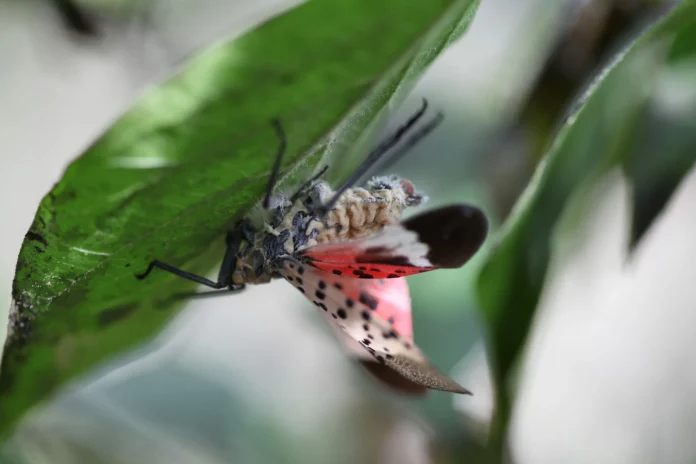
After years of the spotted lanternfly costing vineyards, orchards and lumberyards thousands of dollars, scientists may have finally found it a worthy opponent.
Scientists have identified the fungi Batkoa major that killed 97% of spotted lanternflies on tree trunks when reproduced in a lab setting.
They also identified a second fungi, Beauveria bassiana, that killed 51% of the flies while on the ground. Batkoa major killed the rest on the ground.
“[This is] a great example of how a major new invasive herbivore can be suppressed by native pathogens,” Eric Clifton, a postdoctoral researcher at Cornell, said in a previous article. “Nobody stepped in to do this; it all happened naturally.”
The fungi invade the flies via direct contact. The flies pick up the spores, which then continue to grow around the insect’s body. Within days, the fly will lie dead covered in white spores. These spores are then picked up by other flies, and the infection spreads.
The fungi may also target other insects, but many of them, including bees, know how to eliminate this infection or keep the infected bug away from the hive.
Scientists suspect the spotted lanternflies cannot do this because they were not exposed to this type of fungi in Asia.
The flies have fewer natural predators in the United States which has allowed them to thrive, but they still have some such as praying mantis and birds. However, these predators do not eliminate them at any meaningful rate to slow their spread.
The flies were first discovered in the United States in Berks County, Pennsylvania in 2014. Some PA vineyard owners that year reported up to 90% losses.
A University of Pennsylvania study estimated losses to be at $42.6 million according to The Winchester Star.
The spotted lanternflies feed on more than 70 species of fruit and hardwood trees, vines and crops by sucking the nutrients out of their sap. They also excrete a sugary substance called honeydew that promotes black mold growth, as if anyone needed another reason to avoid honeydew (this editor’s personal opinion).
Butler County has avoided the PA Department of Agriculture’s quarantine list so far, but we have many species of hardwood trees that could attract them such as oak, hickory, maple, pine, sycamore, black cherry, white ash and tulip trees.
On SRU’s campus, we also have trees less common in Pennsylvania like the okame cherry, sugar tyme crabapple and Norway spruce trees. These were added via the SRU Green Fund grant in 2017.
The flies favorite meal is the tree of heaven, another invasive species from Asia. The tree has also been a problem as it can reproduce very quickly and can kill native plants around it, according to The Nature Conservancy.
According to a North Jersey article, homeowners can also plant trap trees, which are trees injected with insecticides. The flies then swarm the tree, eat the sap and die from the poison.
The flies have now spread to 45 PA counties and 14 states. October brings mating season for these flies, so there are bound to be more next year.
The females lay 30-50 eggs at once and coat them with a protective layer to survive the winter. The protective layer is usually rectangular and can be gray, light brown or cream-colored.
The eggs are usually laid in hard-to-reach areas like treetops, but the protective coating will help them stick to any flat surface. They’re able to travel long distances by sticking to cars.
The best way to remove the eggs is to scrape them off with a flat edge, such as a razor blade or a scraper.








Dawn dish detergent & water in a spray bottle kills them! They like to jump so be careful!😮 Spray and step back, you might have to follow them to spray again to make sure they’re DEAD!